- Home
- >
- Preservation Archaeology Blog
- >
- Road Trips, Research, and Site Protection in South...

(April 5, 2019)—One of the most interesting parts of our work here at Archaeology Southwest is the interplay between research and site protection. Two weeks ago, I had the opportunity to spend a weekend visiting archaeological sites in the upper Gila and Mimbres areas of southwest New Mexico, and the trip highlighted some of the important places where our research goals intersect with continuing to protect the sites we study.
Although I’ve been working with published data from the 1970s Mimbres Foundation excavations of Salado sites in the Mimbres Valley since the late 1990s, I’d never visited most of them. Not long ago I realized some of my good friends and colleagues were in the same situation. Our Preservation Fellow Leslie Aragon has strong research interests in southwestern New Mexico Salado archaeology, but except for our summer field school, much of her recent fieldwork has been in Arizona. Two of our field school alumni, Stephen Uzzle and Christopher La Roche, have also been delving deep into Salado datasets lately for undergraduate research projects at the University of Arizona, yet they’d seen even fewer of the archaeological sites they’ve spent so much time reading and thinking about.
The solution seemed obvious—we needed to take a Salado-focused road trip and see these places with our own eyes! As soon as Steve and Chris got out of class one Friday afternoon, we piled into the car with a bunch of snacks and headed to New Mexico for a busy weekend: we managed to visit 11 sites in 50 hours.
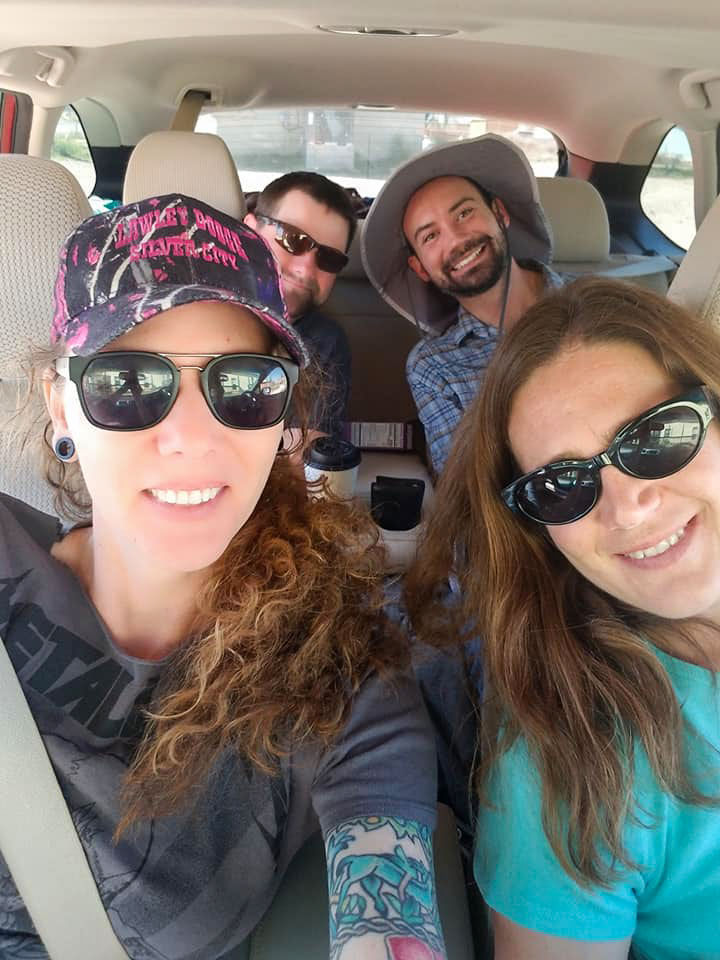
Our first site visit was to the Janss site, a 30-room Salado village dating to the 1300s where the Mimbres Foundation had excavated 6 rooms. The Mimbres Foundation owned this site for decades, and then conveyed it to Archaeology Southwest for continued protection a few years ago. As owners and stewards of this site, our responsibilities include conducting periodic visits to check its condition. Chris and Steve dove right into this task, walking the property boundary and doing a quick survey to check for any signs of disturbance. We were happy to see it was unchanged since our last visit, a beautiful grassy mound among pine trees with no trace of bulldozer cuts or looters’ pits.
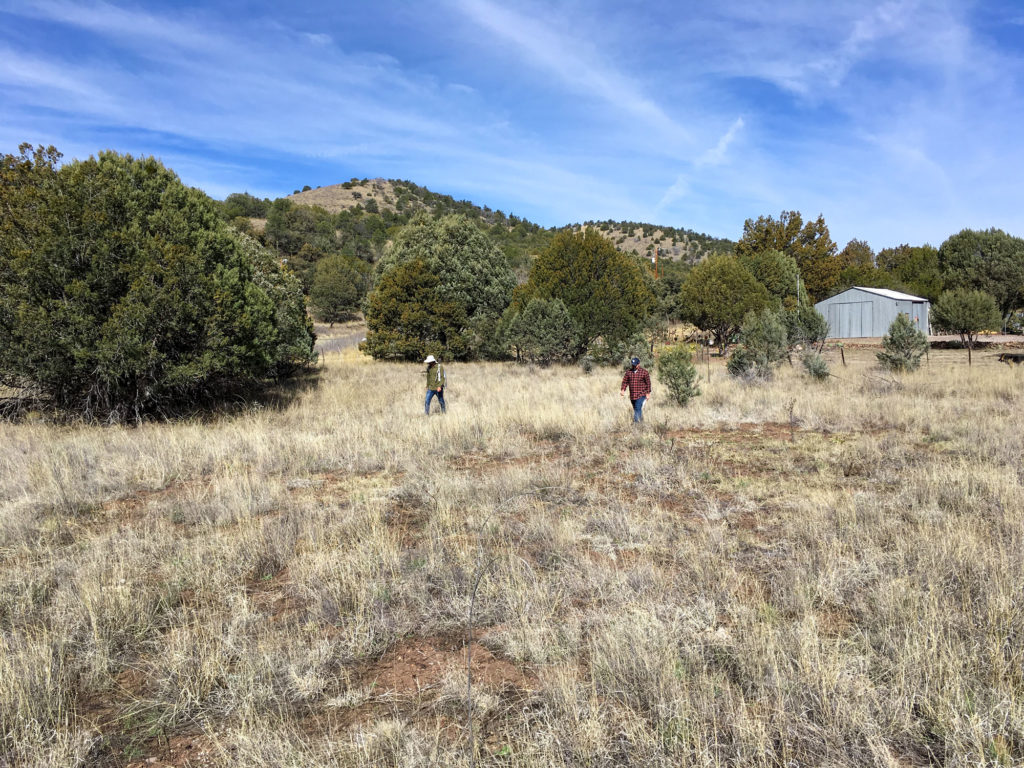
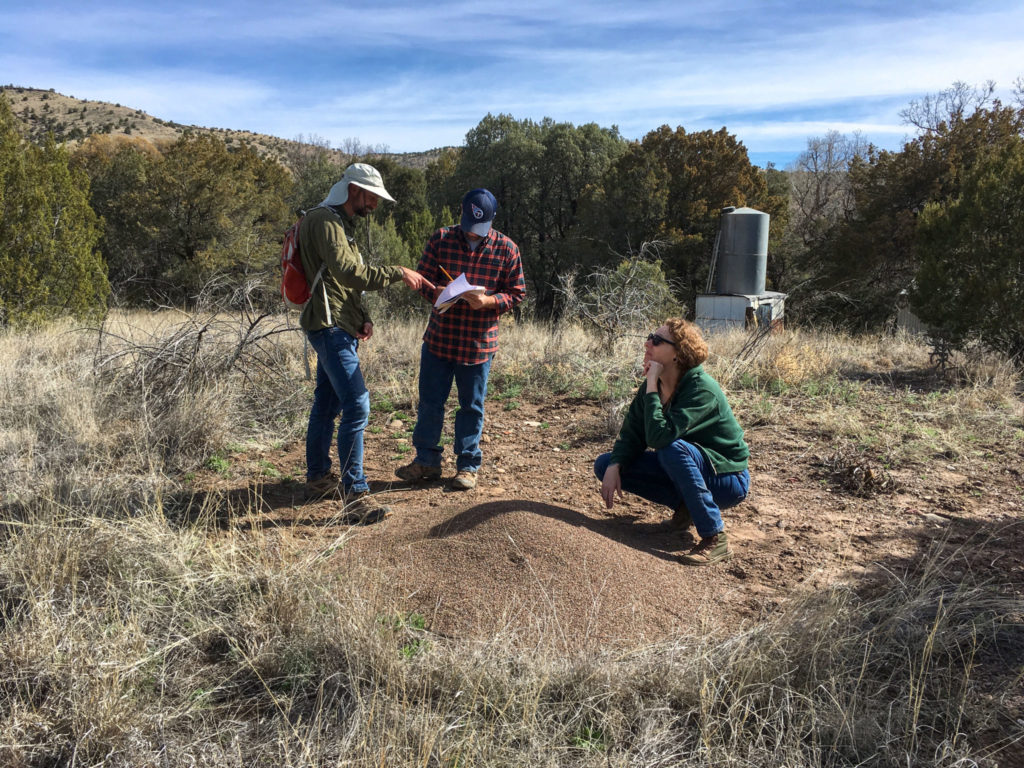
Visiting Janss was easy; the site is next to a highway and I’d been there several times before. I’d visited our next stop, an Early Pithouse site called McAnally, before as well, but getting there proved a little more challenging. When we reached the road crossing over the Mimbres River, the normally trickling stream looked deep enough to make me nervous about driving our vehicle across. We took off our shoes and waded, one of us complaining volubly about the chilly stream full of snow melt from the mountains to the north. Luckily, a short but steep hike to the hilltop where the site lies was enough to warm us back up.
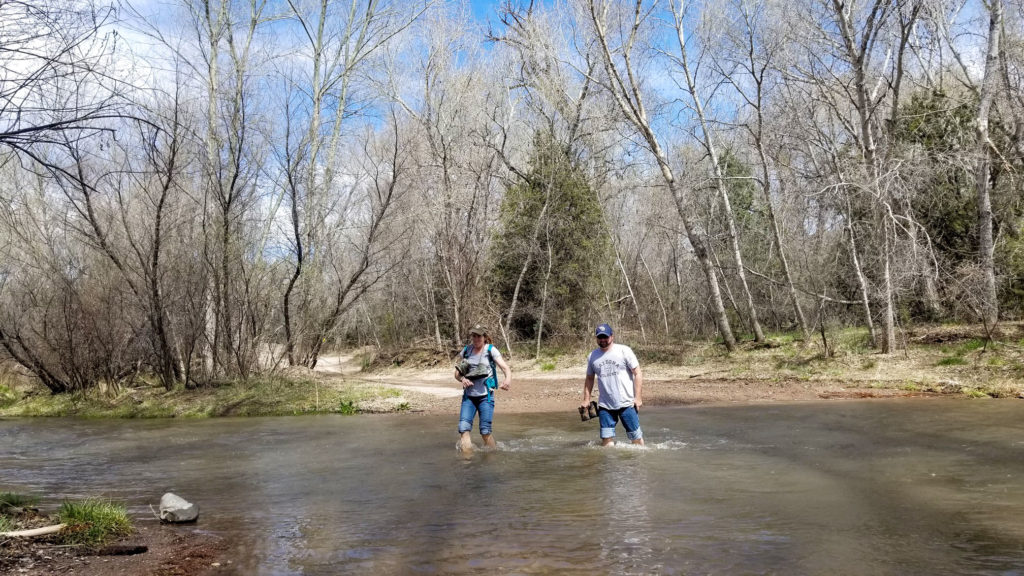
McAnally is also protected by Archaeology Southwest, this time working with a private landowner. The Mimbres Foundation owned an archaeological excavation easement on the property and conveyed it to us at Archaeology Southwest. Later, the landowner donated a full conservation easement on the property. She and the local Site Watch team keep watch over it and other sites in the area, but we’re responsible for checking on it periodically, as well. Chris and Steve got busy completing our our site check forms, and we all enjoyed the view—a high terrace on one side, and the depressions left by pit houses built over a millennium ago on the other.
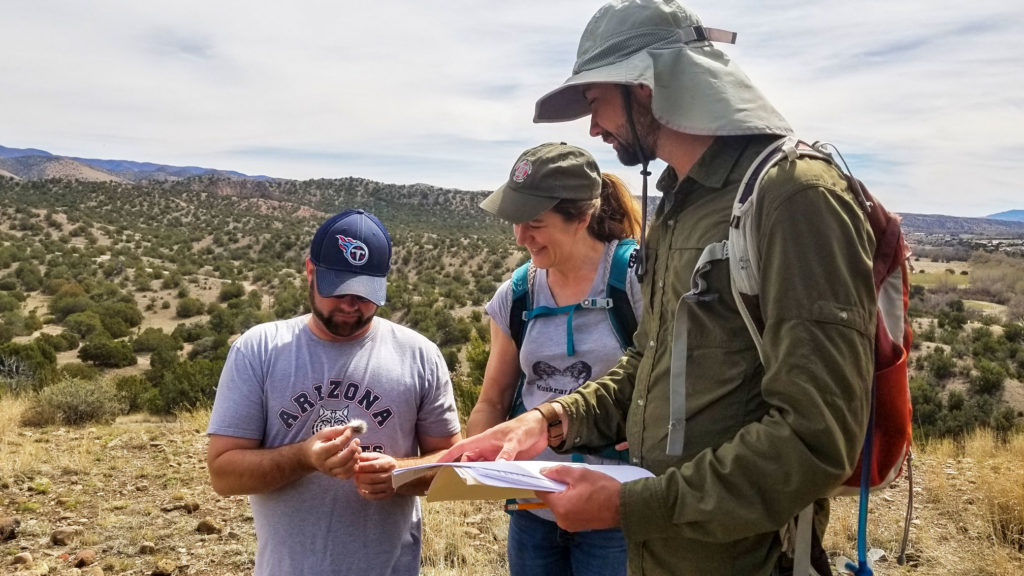
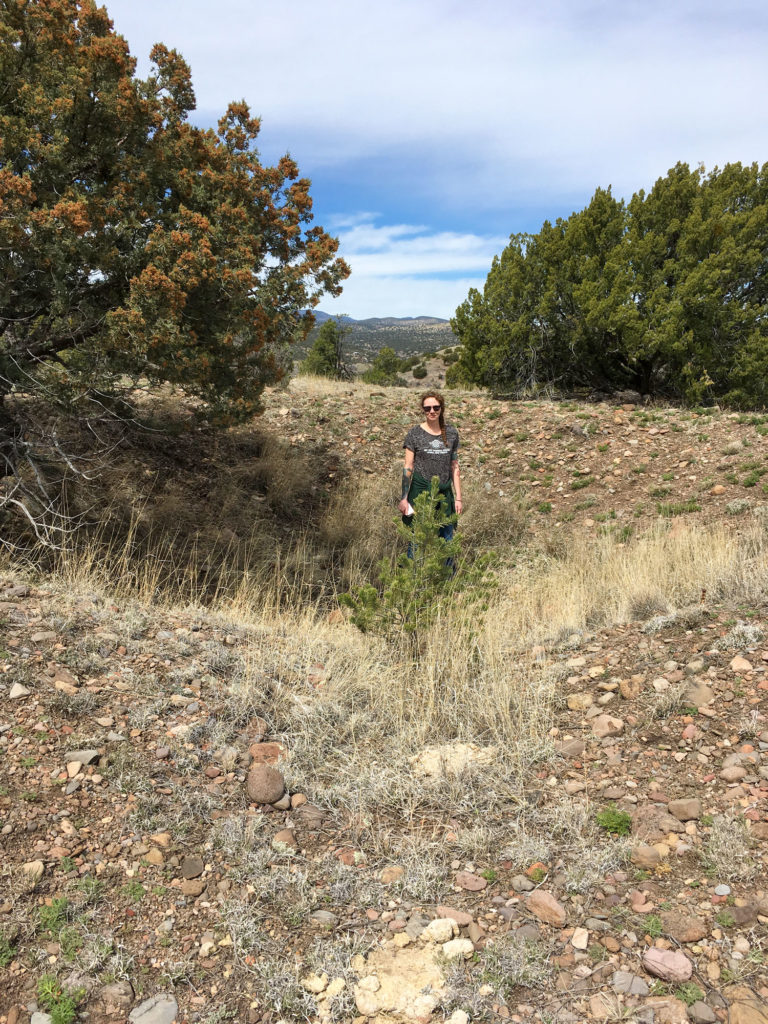
After lunch and a quick visit to the Classic Mimbres village of Mattocks at the Mimbres Cultural Heritage Site (where we’d all been before), we continued on to the Stailey site, another Salado pueblo where the Mimbres Foundation excavated two rooms in the 1970s. I’d tried to contact the landowner by phone without success, so we nervously knocked on his door unannounced. Luckily for us, he welcomed us in with a big smile, and we sat in his living room as he told us a bit about the site’s history. He carefully checked when he originally bought his property to make sure the property lines didn’t artificially divide the small 14-room pueblo. Although he allowed the small test excavations conducted by the Mimbres Foundation, he has otherwise spent his many decades of ownership ensuring that the site remains untouched. Outside, we walked across the adobe mound in the sunshine, looking at the pottery sherds on the ground and enjoying the results of his protection efforts—another Salado site with no evidence of disturbance.
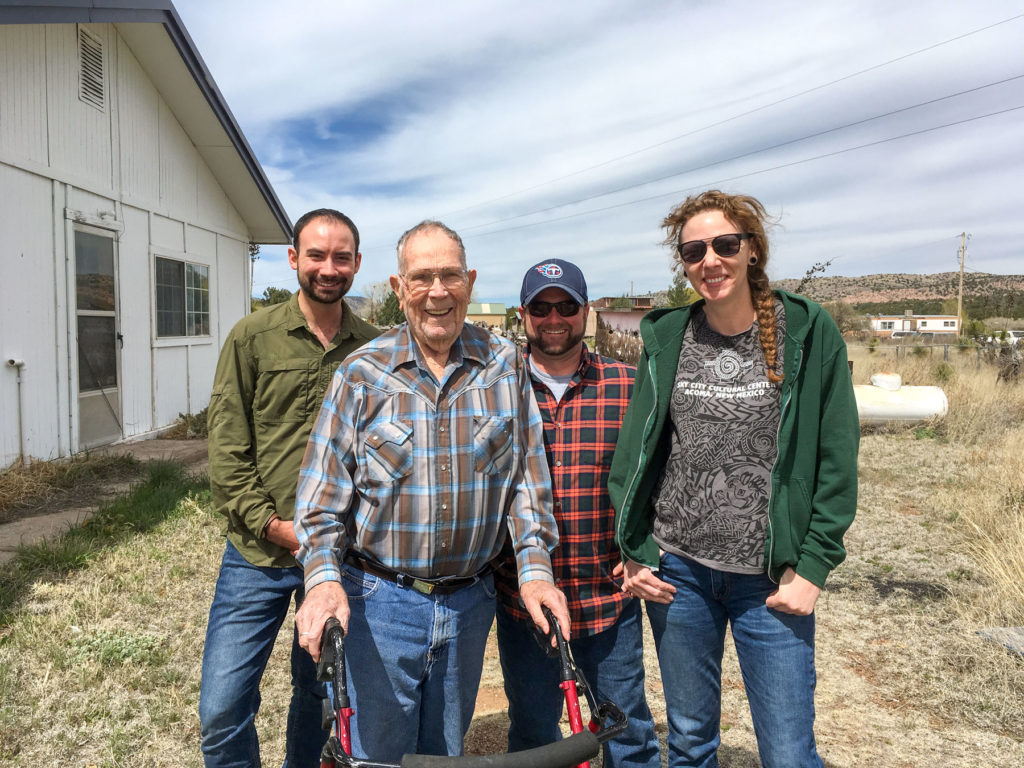
We spent the rest of the afternoon visiting additional archaeological sites in the Mimbres Valley, and then returned to Silver City for the night. The next morning we headed for the Cliff Valley. Among other places, we were able to stop by the Riverside site, where we’re planning some test excavations in the future. This site has an unusual combination of small Classic Mimbres and Salado settlements, revealed by a brief excavation project in the 1970s. Unfortunately, the site sustained several large bulldozer cuts in the same era. Our gang had all visited it before, but it’s an atypical site in many ways and always interesting to visit again. The colorful poppies growing everywhere and the flowing Gila River below were a nice bonus.
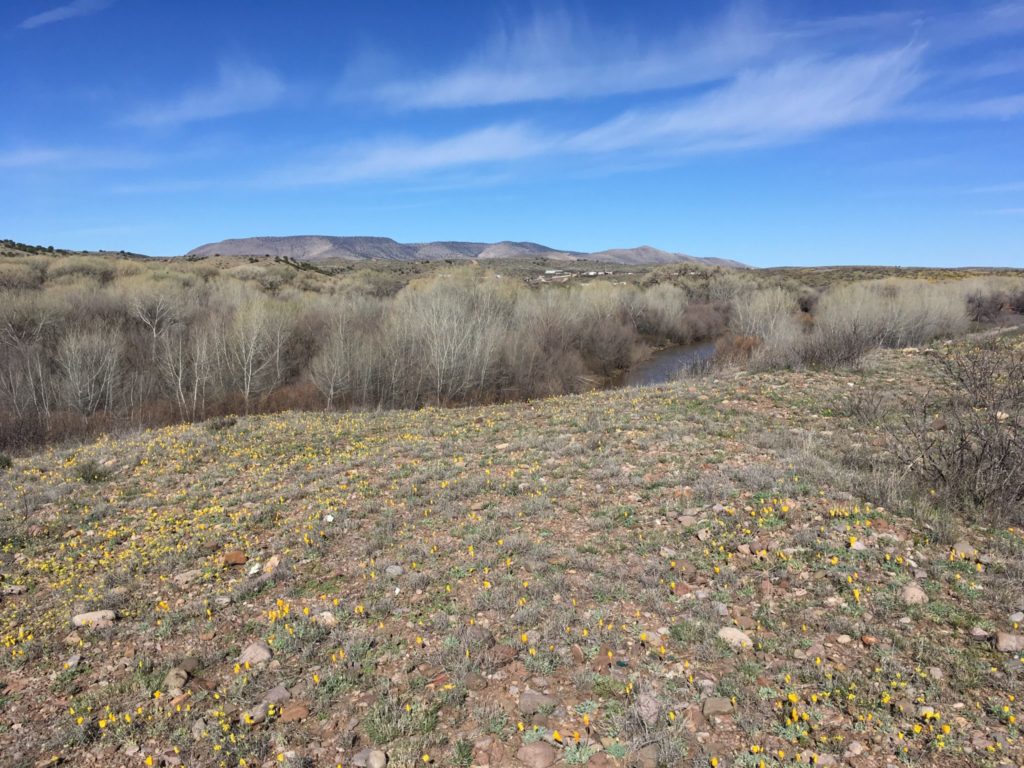
We had a nostalgic visit to Gila River Farm, where our field school has been working since 2016 and will return this summer. This site is owned by The Nature Conservancy, and although it’s well protected today, it was substantially impacted by farming activities decades ago. Much of the site surface looks like a flat, empty field, but our shallow wall trenches and targeted room test excavations each summer have gradually revealed a surprisingly large 80-room pueblo just under the surface. Steve and Chris worked with us there in 2017, but hadn’t been back since then, so we all enjoyed walking over the surface with our latest set of site maps and discussing what new architecture this year’s testing may find.
Our drive home included a few more site visits and a brief stop in Mule Creek, where our field school was based for some years before we moved to Cliff, and also where I spent happy childhood summers on my grandparents’ ranch riding horses, fixing fences, and picking broken glass out of a garbage dump they wanted cleaned up (an activity that made my middle school self swear I’d never, ever become something as boring as an archaeologist screening excavated dirt).
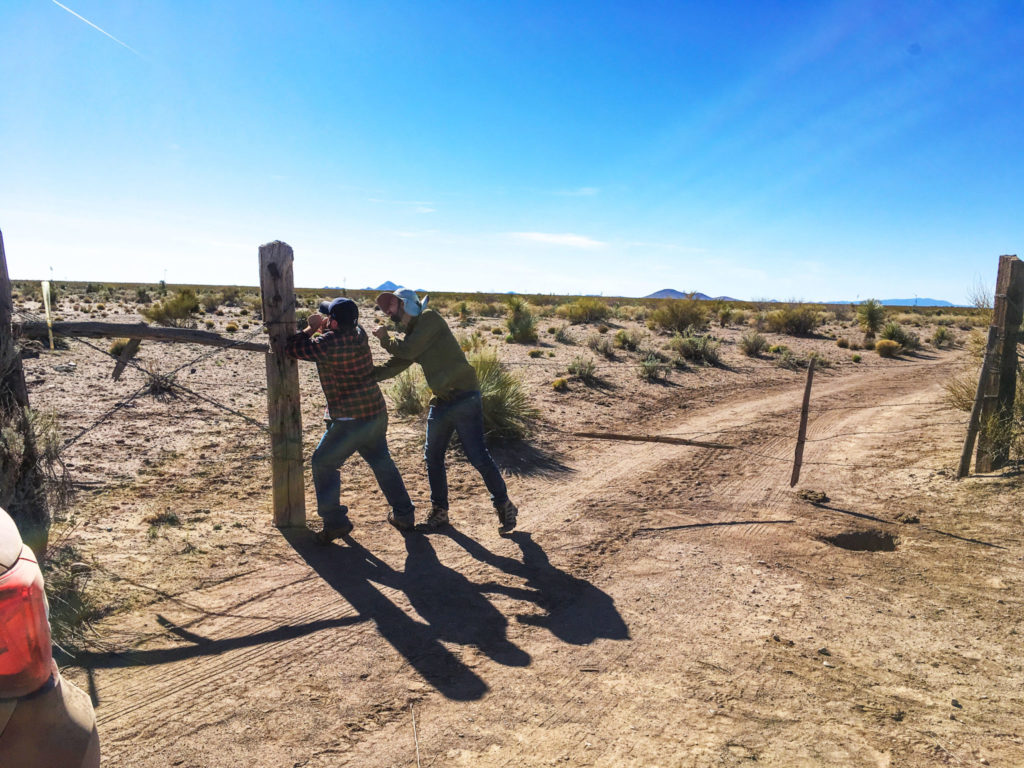
By the time we returned to Tucson we were pretty tired, but we’d managed to see a lot in a short time and were very happy with our trip. All the sites we visited were in the same condition as the last time I’d had news of them, which is a very good outcome for archaeological site protection. Decades ago, the Mimbres and Cliff Valleys saw some of the most devastating looting in the Southwest as bulldozers ripped open sites to expose pottery bowls to sell on the art market.
Today, however, the special places we were able to visit have all been successfully protected and preserved. This protection has been achieved in different ways and by different people and organizations, sometimes individually and sometimes by several partners working together to keep these important places in our American heritage from disappearing.
Much of the research my friends and I are working on now surrounds how Salado sites show a unique story of how farmers centuries ago integrated newcomers into existing communities, balanced their demands on local landscapes with avoiding depleting their natural resources, and negotiated other complex social and environmental issues Americans are still working to balance today. I’m glad we were able to see these places we’ve spent so much time thinking about. And now that we’re back, I’m even happier we could see them in the context of the many different ways in which preserving important places in our archaeological heritage can succeed when we all work together to keep them safe.
Chris and Steve will be presenting their Salado research at the upcoming Society for American Archaeology meetings. We’ll share their work, along with that of other students and staff members, when we get back from the meetings in April.
3 thoughts on “Road Trips, Research, and Site Protection in Southwest New Mexico”
Comments are closed.
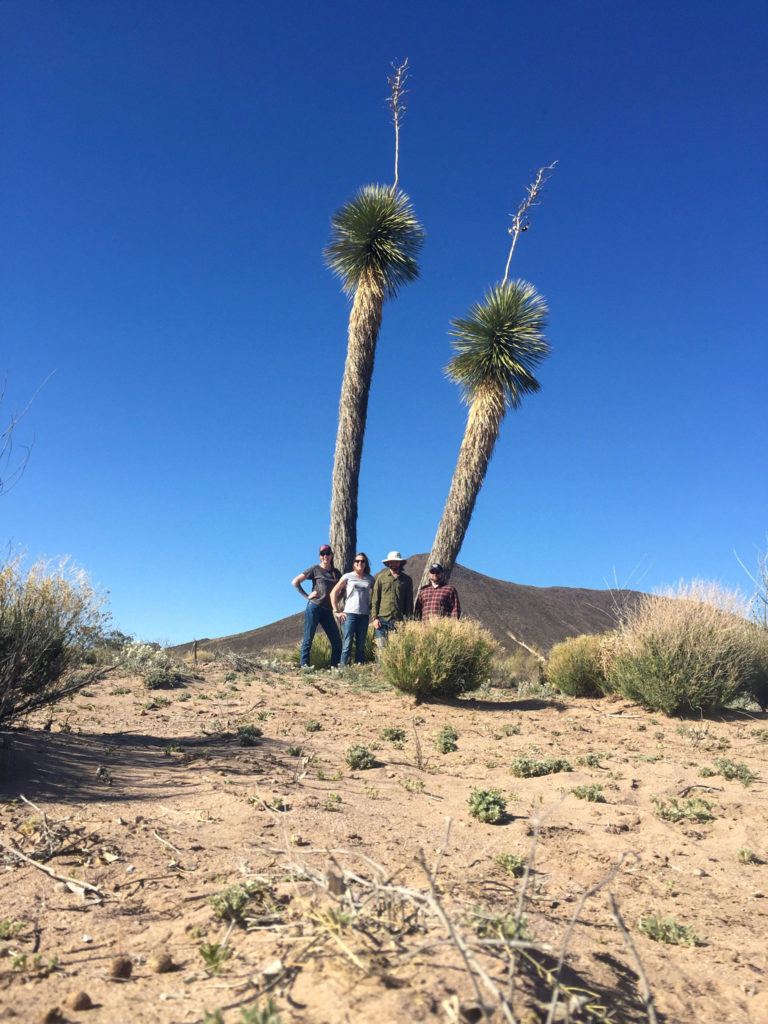
Are they accessible for motorcycles ? Can I/we camp out overnight there ?
Some are– please see below
The Mattocks Site at the Mimbres Culture Heritage Site is open to the public and easy to visit (http://www.mimbrescultureheritagesite.org/) and there is camping available on public lands nearby, especially the Forest Service campgrounds. Gila River Farm (https://www.nature.org/en-us/get-involved/how-to-help/places-we-protect/the-gila-riparian-preserve/) is a great place for scenery and birdwatching, but the archaeological site is under a ploughed field so it’s not much to look at from the surface; there’s camping near there at Box Canyon Campground (north of Cliff at the north end of 293). A visit to the Gila Cliff Dwellings nearby would be a beautiful ride if you’re prepared for a steep, twisty, narrow road, make sure to check the weather conditions first (https://www.nps.gov/gicl/index.htm). Silver City has many good places to eat and visit. And if you stay near Cliff, Tammy’s Cafe is great (it’s a family place so check their hours before making plans).